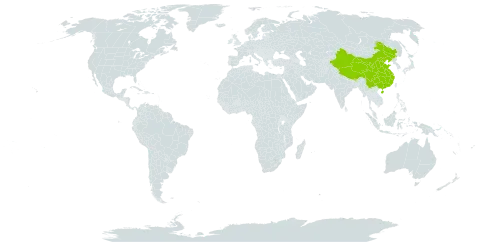Herbs perennial, 20-100 cm tall, shortly pilose or subglabrous. Rhizomes stout, to 1 cm in diam. Stems erect, simple, stout, glabrous. Basal leaves not seen. Middle cauline leaves sessile, strongly auriculate, sagittate, or amplexicaul at base; blade lanceolate, linear-lanceolate, or ovate-lanceolate, 3.5-20 × 0.7-3.5 cm, abaxially glabrous, adaxially puberulent or subpilose, margin ciliolate and dentate, denticulate, or entire, apex acuminate or caudate; auricles oblong or ovate, 2-10 × 2-7 mm. Racemes 5-25-flowered. Flowering pedicels spreading or reflexed; fruiting pedicels divaricate or ascending, 0.8-3 cm, glabrous, straight. Sepals oblong 5-7 × 1.5-3 mm, glabrous or sparsely pilose, base of lateral pair sacctae. Petals purple, spatulate or obovate, 1-1.7 cm × 4.5-7 mm. Median filament pairs 7-9 mm, lateral pair 6-7 mm; anthers oblong, 1.5-2 mm. Ovules 10-16 per ovary. Fruit linear, 2-6 cm × 1.4-2.5 mm; gynophore 0.5-1 mm; valves smooth, glabrous; style 3-8 mm. Seeds brown, oblong, 2-3 × 1.4-1.8 mm, wingless. Fl. May-Aug, fr. Jul-Sep.
More
A cabbage family herb. The lower leaves have stalks but the upper leaves do not have stalks and clasp the stem. The flowers are large and purple. They occur in stalk like clusters at the ends of branches.
